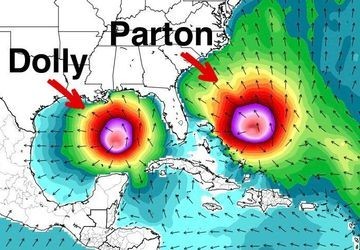The Storm of Misinformation: Navigating the Deluge of Falsehoods During Severe Weather
As storm season descends upon us, bringing with it the threat of torrential rains, devastating winds, and potential flooding, another insidious danger lurks in the shadows: the rapid spread of misinformation. In the age of instantaneous communication and social media ubiquity, false information, misleading claims, and manipulated imagery can proliferate with alarming speed, often outpacing the efforts of official sources to provide accurate updates. This digital deluge can impede rescue efforts, sow panic and confusion amongst vulnerable communities, and create unnecessary stress and anxiety for those impacted by the storms. Understanding the nature of this misinformation, identifying its sources, and knowing how to verify information are crucial skills for navigating this complex and potentially hazardous landscape.
One of the most common forms of storm-related misinformation involves the exaggeration or fabrication of storm severity. Dramatic, often out-of-context images or videos can be shared widely, creating a distorted picture of the actual situation on the ground. Misrepresented radar images, manipulated weather maps, and false predictions of catastrophic events can fuel unnecessary panic and lead to ill-advised actions. Similarly, rumors of widespread infrastructure damage, supply shortages, or looting can quickly spiral out of control, hindering relief efforts and creating a sense of lawlessness. In addition, the anonymity afforded by social media platforms empowers individuals to spread fabricated stories with little accountability, making it challenging to trace the origin of these falsehoods and effectively counter them. The sheer volume of information, both accurate and inaccurate, can overwhelm individuals, making it difficult to discern credible sources from unreliable ones.
The motivations behind spreading storm-related misinformation vary. Some individuals may seek attention or notoriety by posting sensationalized content, while others may have political or ideological agendas they wish to advance under the cover of chaos. Malicious actors can also exploit the crisis by spreading disinformation designed to erode public trust in government agencies or emergency services. Furthermore, the fast-paced nature of social media encourages the rapid sharing of information without proper verification, even by well-intentioned individuals. This often leads to the unintentional dissemination of misinformation, exacerbating the problem. Finally, economic motivations also play a role, as some individuals or groups may attempt to profit from the crisis by spreading false information about essential supplies, evacuation routes, or insurance claims.
The consequences of misinformation during a storm can be significant. False reports of imminent danger can lead to unnecessary evacuations, clogging roadways and diverting resources away from areas where they are truly needed. Misinformation about shelter locations or the availability of aid can leave vulnerable populations stranded and without access to critical resources. Similarly, inaccurate reports about the safety of drinking water or the spread of disease can create public health risks. Furthermore, the spread of misinformation can erode trust in official sources of information, making it more difficult for authorities to communicate effectively with the public during future emergencies. The emotional toll of navigating a barrage of misinformation can also be substantial, adding to the stress and anxiety experienced by those already dealing with the impacts of the storm.
Combating the spread of misinformation requires a multi-pronged approach. Individuals must develop critical thinking skills and adopt a healthy skepticism towards information encountered online, particularly during emergency situations. Verifying information through multiple trusted sources, such as official government websites, established news outlets, and recognized emergency services organizations, is crucial. Checking the credibility of the source, looking for evidence of manipulation in images or videos, and being wary of sensationalized headlines are essential steps in discerning fact from fiction. Additionally, individuals should refrain from sharing information unless they are certain of its accuracy and source. Promoting media literacy and critical thinking within communities is vital to building resilience against the spread of misinformation.
Beyond individual responsibility, social media platforms must take proactive measures to curb the spread of false information. Investing in robust fact-checking mechanisms, implementing stricter content moderation policies, and collaborating with trusted sources to provide accurate information are crucial steps. Developments in artificial intelligence and machine learning can assist in identifying and flagging potentially misleading content, though human oversight remains essential. Transparency regarding the algorithms used to disseminate information and the measures taken to combat misinformation is also important. Government agencies and emergency services organizations must prioritize clear, consistent, and accessible communication with the public during storm events, utilizing multiple channels to reach diverse audiences. Building trust and credibility with communities in advance of emergencies is crucial to ensuring that official information is prioritized over misinformation. Finally, ongoing research into the patterns and mechanisms of misinformation spread is essential for developing effective countermeasures and protecting communities from the harmful effects of this growing threat.


